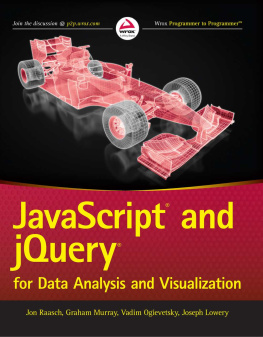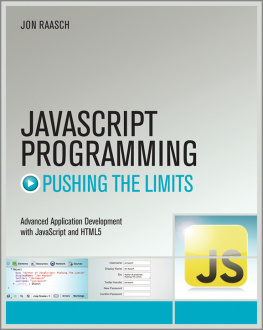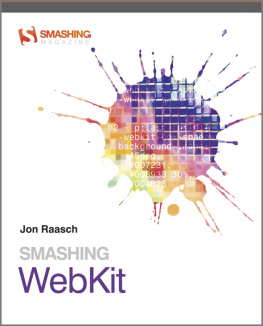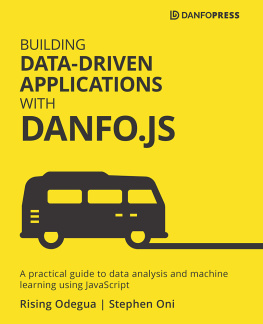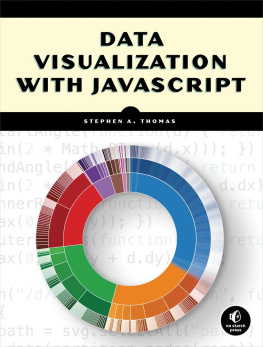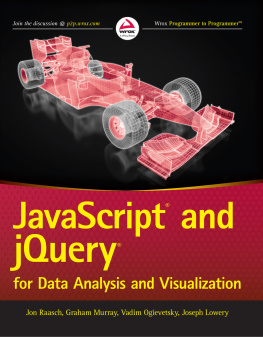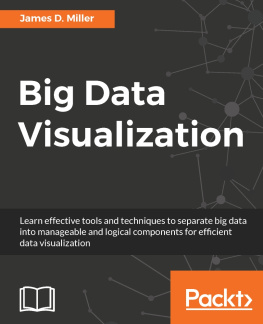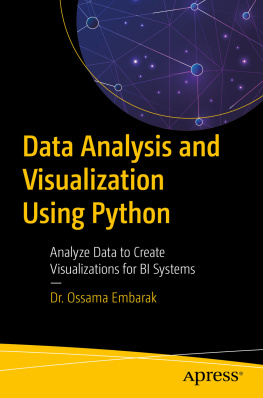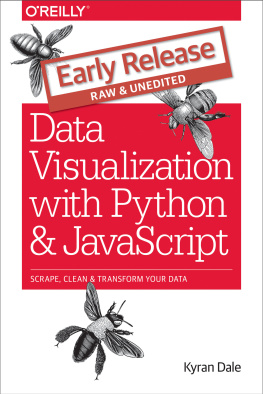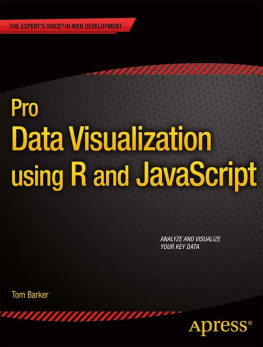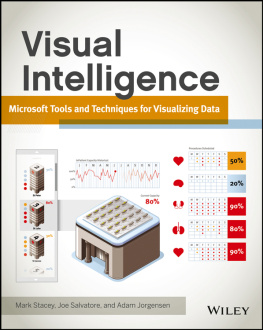Table of Contents
Pages
Guide
List of Illustrations
List of Tables
PART I
The Beauty of Numbers Made Visible
- Chapter 1: The World of Data Visualization
- Chapter 2: Working with the Essentials of Analysis
- Chapter 3: Building a Visualization Foundation
Chapter 1
The World of Data Visualization
What's in This Chapter
- Overview of chart design options
- Comparison of different business applications for data visualization
- Rundown of technological advancements that have made data visualization what it is today
When thinking about data visualization, it's hard to resist the comparison to natural metamorphosis. Consider raw data as the caterpillar: functional, multi-faceted, able to get from here to there, but a little ungainly and really appreciated only by a select few. After data is transformed via visualization, it becomes the butterfly: sleek, agile, and highly recognizable to the point of inspiring and evoking an emotional response. The world of data visualization is an ecosystem unto itself, constantly spawning new nodes of details thatunder the proper nourishing conditionsevolve into relatable depictions that consolidate concepts into an understandable, and hopefully compelling, form.
And where does the web professional fit in this metaphor? Why, they are the spinners and caretakers of the cocoon that transforms raw numbers into meaningful representation, of course. Putting the linguistic paraphrasing aside, web designers and developers are a vital component in visualizing data. Naturally, the current and evolving technological landscape has made this role possibleand increasingly efficient.
Overall, JavaScript and jQuery for Data Analysis and Visualization serves as a practical field guide to the robust world of data visualization, from the acquisition and nurturing of data to its transfiguration into the optimal visual format. This chapter is intended to provide an overview of the present environment, highlighting its capabilities and limitations and discussing how you, the web professional, are a key player in visualizing data.
Bringing Numbers to Life
Appreciating numeric data can be a challenge. Data visualization with relational graphics and evocative imagery helps make raw data meaningful. But before you can transform the data into a meaningful representation, you have to get it first.
Acquiring the Data
The data sphere is enormous and growing dramatically, if not exponentially, every day. Data is streaming in from everywhereand when you consider that the Mars Rover, Curiosity, continually sends its data findings back to Earth, you understand that everywhere is no exaggeration.
With the tremendous amount of data already available, its acquisition is often just a matter of logistics. If the information is in a non-digital formthat is, written recordsit will need to be transcribed into the proper format. Should the desired data be accessible digitally, it may need to be converted from its current structure to one compatible with the display or visualization application.
When your information is in the proper format, you next need to ensure it is exactly the data you need and nothing more. The wealth of data available today makes targeting your data selection, typically through a process known as filtering, pretty much a requirement in all situations. Even when organizations fine-tune their data input from the beginning, changes in the sample or desired output over time will force a filtering adjustment.
Why is it so important to restrict your data stream? One clear reason is processing efficiency. Working with an overload of unnecessary information increases application execution timewhich corresponds directly to increased bandwidth and, thus, costs. Additionally, filtering makes raw data more meaningful. Focused information is easier to analyze and also more easily digested by end users.
Visualizing the Data
In a sense, the most difficult aspect of data visualization is deciding exactly how the information should be depicted. The web designer must select the optimum representation that communicates the data in the clearest, most desired manner with the highest degree of impact. More importantly, the representation should be a discovery tool that leads the user to meaningful insights. Here's an incomplete list of available formats:
We've really just scratched the surface with ways data can be presented. Most of these formats can be shown in either 2D or 3D. You can include interactive elements and animation to add dimensions to the data. But be careful to balance these bells and whistles with meaningful data. No amount of eye candy is worth compromising the representation of information.
NOTEIt's important to realize that a key factor in visualization is intent. Raw data on almost every subject can be interpreted in any number of ways. What message is intended to be communicated should be among the first decisions made when beginning the process of representing data visually.
There are other primary options to consider as well. Do you expose the underlying data or not? If so, are the numbers always visible or are they visible only when some interaction occurs, such as when the viewer's mouse hovers over a data point? Is the initial visualization all there, or does the online version allow the user to drill down for more details? Is animation used to represent a dynamic change? Is there other interactivity available, such as horizontal scrolling along a timeline or zooming into it?
Then, of course, there is styling. With simple bar and pie charts, you'll not only need to decide which colors represent which elements, but also the size, color, style, and font to be applied for labels and legends, if anyyet another choice. Many such selections will be governed by other factors, such as the creating organization's branding or in-house standards; however, just as many will have no such foundation to work from, and the designer's vision will become paramount.
Moving beyond the basics of charting primitives, the visualization designer can choose to include graphics. Not only can background images frame a presentationboth literally and thematicallybut symbols can be used as data points, like logos pinned in a map of third-quarter sales. An entire field of data visualizationinfographicsis devoted to the combination of information and visual imagery.
The truth is that the web professional's current options for depicting data are a bounty of riches. Although the possibilities may appear to be overwhelming, it's up to the visualization designer to identify the optimum representation and bring it into reality.
Simultaneous Acquisition and Visualization
The world of data visualization doesn't just consume existing data: New data is constantly being added to the stores, even in real time. Information can be collected directly through an HTML form on a website and incorporated into the representation programmatically. One of the most common examples of this is an online poll, such as the one shown in . After a site visitor has chosen his or her desired response and clicked Vote, the current relative standing of all entries, including the one just entered, is displayed.

